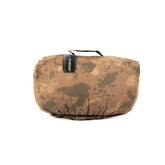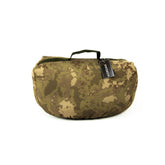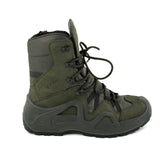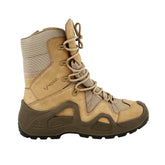What is a Membrane? - How are Membrane Values Interpreted?
Membrane fabric, which makes daily life practical, enjoyable, and ecological, is now changing the way we exercise. So, what is a membrane? A crucial component in various sectors for providing heat and water insulation, membranes are used in textiles after being utilized in the building and housing sectors, allowing for all kinds of sports activities in all weather conditions. Membrane fabrics provide water and heat impermeability in many sports, from running to cycling, trekking to mountaineering. Shoes, boots, pants, raincoats, bags, and many more items are not affected by rain or snow, thanks to membrane technology, and they maintain body heat even in the most challenging conditions, enabling healthy movement.

Membrane Technology with Breathable Micro-Pores
A common feature of products coated with membrane fabric is their ability to breathe, along with having micro-porous structures. Known as polyurethane membrane, this technology, with its special micro design, prevents water from passing through while providing protection against the weather conditions and being sensitive to the sweat your body produces. In addition to this feature, membrane-coated fabrics, which are also windproof, provide superior protection even in environments with the lowest temperatures. Membrane technology stands out in urban shoes, sports shoes, trekking boots, fishing boots, shoes used for water sports, sleeping bags, tents, and many other materials. Waterproof, windproof, and comfortable equipment is produced using breathable fibers.
Membrane Miracle with Tensile Strength and Light Transmission
Among the characteristic features of membrane material are factors such as tensile strength and light transmission. Tensile strength directly affects the durability of the product in which the membrane material is used. Therefore, it is crucial for the strength to be able to withstand the loads applied to the product. The higher the tensile strength in the design, the longer the service life. In case of any tear in the membrane coating or the spread of a possible tear, the membrane tensile module comes into play to minimize the damage. Depending on the type and quality of the material used in the coating process, the service life can be up to 30 years. The concept of light transmission varies according to the material used in the membrane coating or the distance between the fibers. Since the membrane is already a special type of fabric produced by the fibers touching, the characteristics of the fibers directly affect the technology. For these reasons, membrane coating makes many fabrics used in the sports sector, such as boots, hiking shoes, pants, jackets, or coats that are waterproof and windproof, make movement smooth and enjoyable.

How are Membrane Values Classified?
Membrane values used in designs are classified into classes such as A, B, C. Class A membrane material coating consists of glass fiber weave made from politetrafloroethylene (PTFE) resin. In this class, the resin is limited to at least 90% PTFE ratio. The weight of the weave is 150 g/m2 or more. In addition, the weight of the coating material is between 400 and 1100 g/m2, and the thickness is at least 0.5 mm.
In class B membrane coating, materials such as polyvinyl chloride resin (PVC), chloroprene rubber, chlorosulfonated polyethylene rubber are used. The values here are the same as class A values, with the only difference being that the material does not conduct flame. Activity materials that are resistant to heat and do not conduct heat fall into this class. Class C coating consists of PVC resin, chloroprene rubber, chlorosulfonated polyethylene rubber. Woven polyamide, polyaramide, polyester, or polyvinyl alcohol fabrics coated with these materials are evaluated under class C. When examined in terms of values, the weight of the synthetic fiber weave is 100 g/m2 or more. The weight of the coating material and the thickness of the membrane are the same as in other classes. Flame non-conductivity is also a factor here. In terms of tensile strength, a value of 20 kg/cm is considered ideal. The tear resistance of a membrane material, which is at least 10 kg in weight and 10 mm in width, is equivalent to at least 15% of the tensile strength. These values directly affect the tear resistance of the products coated with the membrane. The stitched parts of products such as sports shoes or boots, upper and lower equipment, and outdoor materials are produced considering these ratios.

Membrane coating emerges as one of the most important components directly affecting the service life and durability against external factors of sports equipment. If you want to make sure that the equipment you choose for activities such as running, trekking, mountaineering, or other outdoor activities is produced adhering to membrane coating values and tested, Crowon opens its doors with hundreds of product options for you.









Leave a comment
Please note, comments need to be approved before they are published.